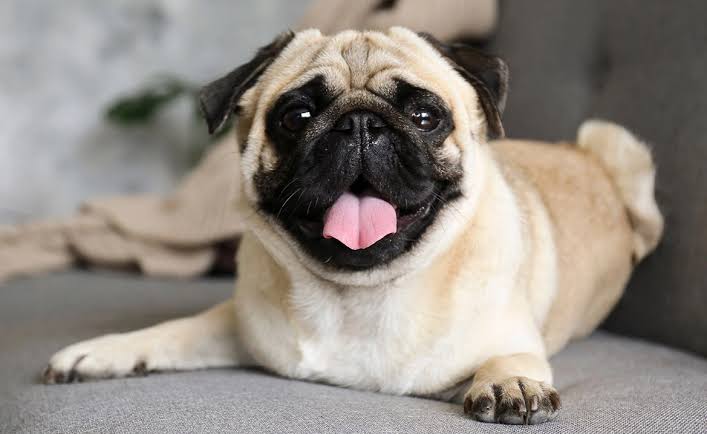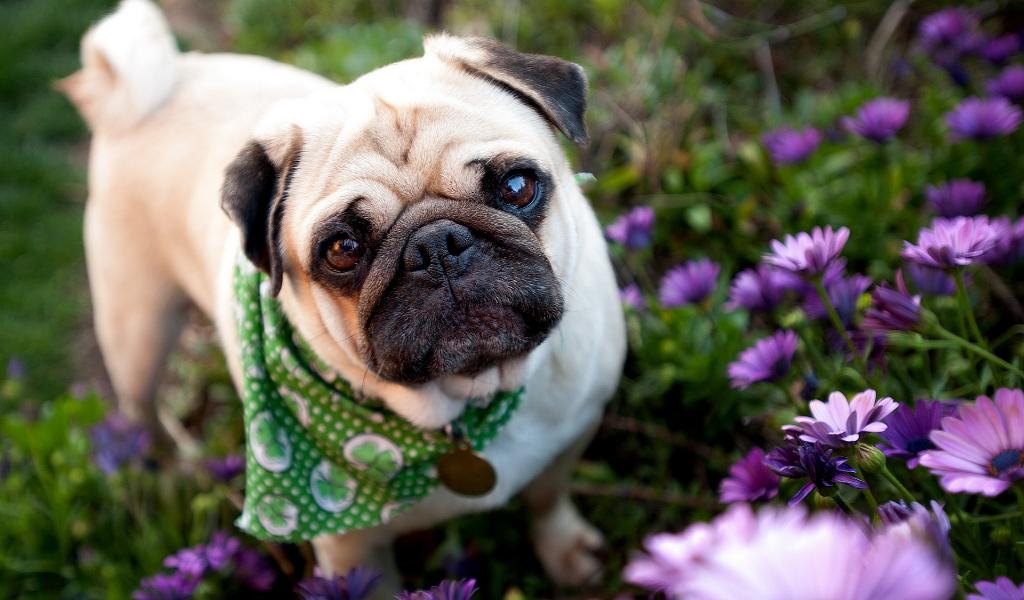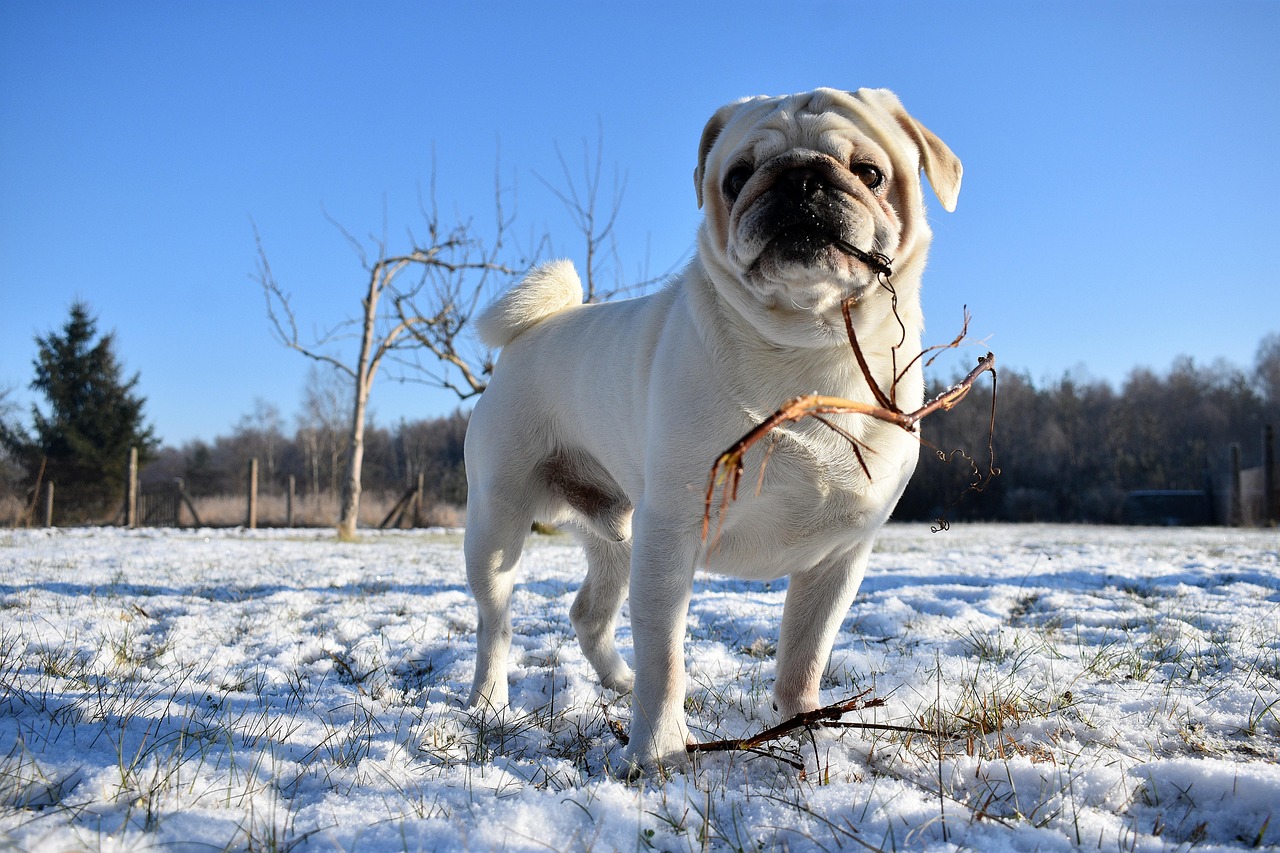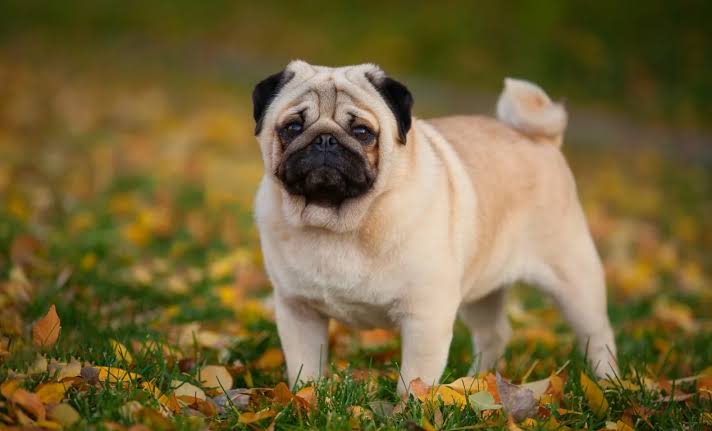🐕 Are Pugs Hypoallergenic? Understanding This Charming Breed📋 Quick Answer: No, Pugs are not hypoallergenic Pugs have a double coat that sheds year-round and produces significant amounts of dander, which contains allergen proteins. However, many Pug owners with mild allergies successfully live with these lovable companions through proper care and management strategies. 🐾

Pugs are beloved family companions known for their charming personalities and affectionate nature 📊 Pug Quick FactsHypoallergenic Level: ❌ Not Hypoallergenic
Shedding Level: ⭐⭐⭐⭐⭐ High
Coat Type: Double Coat
Dander Production: Moderate-High
Size: Small (14-18 lbs)
Temperament: Affectionate & Playful
🔬 Understanding Pug Allergens↑ Back to MenuTo understand whether Pugs are suitable for allergy sufferers, it's important to know how dog allergies work and what makes certain breeds more challenging for people with sensitivities. 🧬 
Energetic and playful, Pugs bring joy to their families despite their shedding characteristics 🐾 The Double Coat RealityPugs have a dense double coat consisting of a soft undercoat and a short outer coat. This coat type naturally sheds throughout the year, with heavier shedding occurring during spring and fall as they transition between seasonal coats. While this shedding is completely normal and healthy for the breed, it does mean that Pug hair and the proteins it carries will be present in your home environment. 🍂 💨 Dander and Allergen ProteinsThe primary trigger for dog allergies is not actually the hair itself, but rather proteins found in dander (dead skin cells), saliva, and urine. The most common allergen is called Can f 1 protein. Pugs, like all dogs, produce these proteins, and their shedding coat helps distribute dander throughout living spaces. The amount of allergen varies between individual dogs, which is why some people may react more strongly to certain Pugs than others. 🔬 
Pugs are adaptable companions who bring warmth and affection to any household 👃 Facial Structure ConsiderationsPugs belong to the brachycephalic breed group, meaning they have flat faces and distinctive wrinkled skin. These adorable wrinkles require regular cleaning to maintain skin health and prevent bacterial growth. The folds can trap moisture and natural oils, which is why daily wrinkle care with gentle, dog-safe wipes is an important part of Pug ownership. This grooming routine helps keep your Pug comfortable and healthy. 😊 🌬️ Breathing and MoistureDue to their facial structure, Pugs may breathe more audibly than other breeds and can produce more moisture through panting and occasional drooling. This is a normal characteristic of the breed rather than a health problem in most cases. While this does mean some saliva dispersion in the environment, regular veterinary checkups ensure your Pug's respiratory system stays healthy. 🏥 🔍 Important Context: While Pugs are not hypoallergenic, individual allergy responses vary significantly. Some people with mild dog allergies live happily with Pugs using management strategies, while others may find their symptoms more challenging. The key is understanding your specific sensitivities before making a commitment.
❤️ Why Pugs Are Such Beloved Companions↑ Back to MenuDespite not being hypoallergenic, Pugs remain one of the most popular dog breeds worldwide, and for excellent reasons. Their wonderful temperament and adaptability make them exceptional family pets. 🌟 
Pugs are excellent apartment dogs who love relaxing with their favorite humans 🎭 Charming PersonalityPugs are renowned for their clownish, affectionate, and even-tempered nature. They form incredibly strong bonds with their families and are known for their desire to please and entertain. These little comedians often display endearing behaviors that keep their owners laughing, from their expressive faces to their playful antics. They're equally happy playing games or cuddling on the couch. 😄 👶 Excellent with ChildrenPugs are patient, gentle, and sturdy enough to be wonderful companions for families with children. They tolerate the enthusiasm of young family members well and enjoy being part of family activities. Their small but solid build means they're not fragile, yet they're not so large as to overwhelm smaller children. 👨👩👧👦 🏙️ Adaptable Living CompanionsOne of the Pug's greatest strengths is their adaptability to various living situations. They thrive in apartments, suburban homes, or rural settings equally well. Pugs don't require extensive outdoor space or marathon exercise sessions, making them ideal for urban dwellers or less active individuals. A few short walks and some indoor playtime keep them happy and healthy. 🏠 
Pugs are food-motivated dogs, which makes training enjoyable and effective 🎓 Trainable and Eager to PleaseWhile Pugs have an independent streak, they are intelligent and respond well to positive reinforcement training. Their love of treats and affection makes training sessions fun and productive. They may not be as instantly obedient as some working breeds, but their desire to be near their people means they learn household routines quickly. 🦴 🤝 Social and FriendlyPugs typically get along wonderfully with other pets and welcome visitors with enthusiasm. They're naturally sociable dogs who enjoy company, whether canine, feline, or human. This makes them excellent choices for multi-pet households or social families who frequently entertain guests. 🐕 💡 Pug Owner Insight: Many Pug owners describe their dogs as having big personalities in small packages. They're attentive without being demanding, playful without being hyperactive, and affectionate without being clingy. This balanced temperament is why Pugs have been cherished companions for centuries.

Adventure-ready Pugs enjoy car rides and outings with their families 🔄 Hypoallergenic Alternatives to Pugs↑ Back to Menu🐕 Similar Hypoallergenic BreedsIf you love the Pug's personality but need a hypoallergenic alternative, consider these breeds:
💡 Why These Breeds: All of these breeds share the Pug's affectionate, companion-oriented temperament and adaptability to apartment living. They require moderate grooming but produce minimal dander and don't shed significantly. While they lack the Pug's distinctive flat face, they offer similar devotion and charm.

Pugs are adaptable companions who enjoy various activities and environments 💡 Balanced Perspective: While hypoallergenic breeds produce fewer allergens, they often require more intensive grooming and higher exercise needs. Pugs offer easier day-to-day care and lower energy requirements, which many families prefer. The choice depends on your priorities and lifestyle.
🔍 Considering an Allergy-Friendly Alternative?If allergies are a significant concern, you may want to explore hypoallergenic breeds that offer similar companionship with lower allergen production. Our breed selector helps you find the perfect match for your lifestyle. 🐶 Discover breeds that match your allergy sensitivity and lifestyle preferences! ✨ 
Pugs bring beauty and joy to every setting they inhabit 🏠 Successfully Living with a Pug When You Have Allergies↑ Back to MenuMany people with mild to moderate dog allergies successfully share their homes with Pugs by implementing thoughtful management strategies. Here's how to maximize your chances of comfortable coexistence. 🌟 💚 Important Note: Before bringing home a Pug, spend extended time with the breed to gauge your personal reaction. Visit Pug owners, volunteer at shelters, or attend breed meetups. Individual responses vary significantly, and real-world exposure is the best predictor of compatibility.
🧹 Smart Home Environment ManagementCreating an allergy-friendly home doesn't mean compromising on comfort. Invest in a quality HEPA vacuum and establish a regular cleaning routine that includes floors, furniture, and fabric surfaces. Hard flooring is easier to keep allergen-free than carpeting. Consider washable area rugs that can be cleaned frequently. Running HEPA air purifiers in common areas helps reduce airborne particles. 💨 
Seasonal changes bring extra shedding, but regular grooming keeps it manageable 🛏️ Designated Allergen-Free ZonesMany allergy-conscious Pug owners maintain their bedroom as a dog-free sanctuary. This provides a clean space for restful sleep and recovery time from allergen exposure. Use door draft stoppers to prevent hair migration, and keep bedroom doors closed. This boundary is easier to maintain than you might think, and Pugs adapt well to having their own cozy sleeping area elsewhere. 🚪 🧼 Regular Grooming RoutineConsistent grooming significantly reduces loose hair and dander in your home. Brush your Pug outdoors several times weekly using a de-shedding tool or rubber curry brush. This removes loose hair before it falls throughout your living space. During peak shedding seasons (spring and fall), daily brushing may be beneficial. Many owners find this grooming time strengthens their bond with their Pug. 🪮 
Year-round shedding is a Pug characteristic, but winter cuddles make it worthwhile for many families 🛁 Strategic Bathing ScheduleRegular bathing helps manage dander and keeps your Pug's coat healthy. Bathe your Pug every 3-4 weeks using a gentle, moisturizing dog shampoo. More frequent bathing can dry out their skin and potentially increase dander production. Some owners find that allergen-reducing shampoos provide additional relief. Always thoroughly rinse to remove all shampoo residue. 💧 💊 Medical Support OptionsWork with your allergist to develop an appropriate management plan. Many people successfully control symptoms with daily antihistamines or nasal corticosteroid sprays. Some individuals pursue immunotherapy (allergy shots) which can reduce sensitivity over time. Regular check-ins with your healthcare provider ensure your management strategy remains effective. 🏥 💡 Success Story: Many Pug owners report that while initial adjustment took a few weeks, their bodies adapted to their specific dog over time. About 30-40% of people with mild allergies experience reduced symptoms after several months of exposure to the same dog, though this isn't guaranteed for everyone.
🌿 Natural Allergen ReductionSimple household adjustments can make a difference. Wash your Pug's bedding weekly in hot water, keep humidity levels between 30-50% to reduce dust mites and mold, and wipe down your Pug's paws and coat after outdoor walks to remove environmental allergens like pollen. These steps benefit both you and your pet. 🍃 
That irresistible Pug smile captures hearts everywhere - facial wrinkles need daily gentle cleaning ✂️ Complete Pug Grooming Guide↑ Back to MenuProper grooming keeps your Pug healthy, comfortable, and looking their best while helping manage allergen levels in your home. Here's a comprehensive approach to Pug care. 🧴 🪮 Brushing Technique and ScheduleBrush your Pug 3-4 times weekly using appropriate tools for their double coat. A rubber curry brush works wonderfully to loosen dead hair, followed by a bristle brush to remove it. During spring and fall shedding seasons, daily brushing prevents hair tumbleweeds throughout your home. Make grooming a positive experience with treats and praise - most Pugs enjoy the attention. 😊 ⚠️ Grooming Tip: Always brush in the direction of hair growth using gentle pressure. Outdoor brushing is ideal as it keeps shed hair outside. If brushing indoors, lay down a towel to catch loose fur for easy cleanup afterward.
🧼 Bathing Best PracticesBathe your Pug every 3-4 weeks to maintain coat and skin health. Use lukewarm water and a mild, moisturizing dog shampoo formulated for sensitive skin. Work the lather gently through their coat, being careful around the face. Rinse thoroughly - any remaining shampoo can cause skin irritation. Towel dry and allow your Pug to air dry in a warm, draft-free area. 🛁 👃 Facial Wrinkle CareThose adorable wrinkles need daily attention to stay healthy. Gently clean between the folds using unscented, dog-safe wipes or a soft damp cloth. Pay special attention to the deep wrinkle above the nose and around the eyes. After cleaning, pat the folds dry with a soft towel to prevent moisture buildup. This routine takes just a few minutes and becomes second nature quickly. 🐾 
Seasonal outdoor adventures are perfect for Pugs - just remember to wipe paws before coming inside 💅 Nail and Paw CareTrim your Pug's nails every 3-4 weeks or as needed. Regular nail maintenance prevents discomfort and protects your floors. If you hear clicking on hard surfaces, it's time for a trim. Many owners also wipe their Pug's paws after walks to remove dirt and environmental allergens. Check between toe pads for debris or irritation. 🦶 👂 Ear CleaningCheck your Pug's ears weekly for dirt, wax buildup, or signs of infection. Clean with a veterinarian-approved ear cleaner and cotton balls - never insert anything into the ear canal. Healthy Pug ears should be pink and odor-free. If you notice redness, discharge, or excessive scratching, consult your veterinarian. 👂 🦷 Dental HygieneDental care is crucial for Pugs. Brush their teeth several times weekly using dog-specific toothpaste and a soft brush. Dental chews and toys can supplement brushing. Good oral hygiene prevents painful dental disease and contributes to overall health. Many Pugs learn to tolerate or even enjoy teeth brushing with patient introduction. 🪥 💡 Professional Grooming: While Pugs don't require professional grooming as frequently as some breeds, many owners appreciate occasional visits for thorough bathing, nail trimming, and anal gland expression. This can be especially helpful for owners with allergies, as it reduces direct contact with allergens.
❓ Frequently Asked Questions↑ Back to MenuNo, coat color has no impact on shedding amount or allergen production. Both black and fawn Pugs shed equally and produce the same levels of dander. The allergen proteins come from skin cells and saliva, not fur pigmentation. All Pugs shed year-round regardless of color, though black fur may be less visible on dark-colored furniture and clothing. 🐾
Not necessarily. While puppies may temporarily produce fewer allergens due to their smaller size and developing coat, adult Pugs will produce more allergens as they mature. If you're considering a Pug, it's important to spend time with adult dogs of the breed to understand your true reaction. Puppy exposure alone isn't a reliable predictor of long-term compatibility. 🐕
Regular bathing can help manage allergens, but it's not a complete solution. Bathing every 3-4 weeks with appropriate products can temporarily reduce dander levels by 20-40%, though effects diminish within a few days. Over-bathing (more than every 2-3 weeks) can dry out skin and potentially increase dander production. Bathing is one helpful tool among many in an allergy management strategy. 💧
Results vary by individual. Some people experience reduced symptoms after several months of exposure to their specific dog (about 30-40% of cases), while others maintain stable symptoms, and some see worsening reactions. There's no guarantee of adaptation. If you have significant allergies, work with an allergist and have a backup plan should symptoms become unmanageable. 🎲
While no breed perfectly matches Pug temperament and appearance, several hypoallergenic breeds offer similar companionship qualities. Havanese, Bichon Frises, and Bolognese dogs share Pugs' affectionate, playful, and adaptable nature in small, companion-dog packages. They won't have the distinctive flat face and wrinkles, but they provide loving companionship with minimal shedding. 🐕
Costs vary based on individual needs. Expect to invest in quality cleaning equipment (HEPA vacuum $200-500), air purifiers ($100-400 each), grooming supplies ($50-100), and potentially medical expenses for allergy management (antihistamines, doctor visits). Monthly ongoing costs typically range from $50-150 depending on your specific situation and severity of allergies. 💵
Yes, HEPA air purifiers can be quite helpful. Quality units remove airborne dander, hair, and dust particles, potentially reducing symptoms by 30-50% when used consistently. Place purifiers in rooms where you and your Pug spend the most time. They work best as part of a comprehensive approach that includes regular cleaning and grooming. Remember to replace filters according to manufacturer recommendations. 🌬️
This depends on your specific situation. Many people with mild allergies successfully live with Pugs using management strategies. However, it's crucial to spend extended time with Pugs first, consult your allergist, and honestly assess your willingness to maintain allergen-control measures. If your heart is set on a Pug and allergies are mild, success is possible - but if allergies are moderate to severe, consider hypoallergenic alternatives. ❤️
🎯 Making the Right DecisionChoosing to bring a Pug into your life is a wonderful decision for many families, but it requires honest assessment of your allergy situation and commitment to management if needed. Pugs offer incredible companionship, unwavering loyalty, and endless entertainment. 💕 💚 Balanced Perspective: While Pugs are not hypoallergenic, they are exceptional companion animals with remarkable personalities. Many people with mild allergies successfully share their homes and lives with Pugs through thoughtful management. The key is making an informed decision based on realistic expectations rather than wishful thinking.
If you determine that a Pug is the right breed for you despite allergy considerations, you're joining a passionate community of devoted Pug owners who cherish these charming dogs. Their affectionate nature, adaptability, and entertaining personalities make the extra effort worthwhile for thousands of families worldwide. 🌍 ✨ Worth Considering: The bond between Pugs and their owners is legendary. These dogs give their whole hearts to their families and ask for nothing more than love and companionship in return. For many people, the joy a Pug brings far outweighs the challenges of managing shedding and allergens.
However, if allergy testing reveals significant sensitivities or you're unwilling to commit to regular allergen management, exploring truly hypoallergenic breeds is the responsible choice. There's no shame in prioritizing your health - finding the right breed match ensures a happy, sustainable relationship for both you and your future companion. 🐶 📚 Summary: Key Takeaways✅ What We've Learned:
The decision to bring any dog into your home deserves careful consideration. Pugs offer extraordinary companionship and bring immense joy to families worldwide. Their charming personalities, loyalty, and adaptability make them beloved companions despite their shedding characteristics. 🌟 If allergies are a concern, thorough testing and honest self-assessment are essential. For some people, proper management makes Pug ownership entirely feasible. For others, exploring hypoallergenic breeds ensures a healthier, more comfortable experience for everyone involved. Either path leads to the companionship and love that makes dog ownership so rewarding. 🐾💕 | |||||||||||||||||||||||||
|
| |||||||||||||||||||||||||
| Переглядів: 34 | | | |||||||||||||||||||||||||
| Total comments: 0 | |
